The pioneers were the first people to settle in the frontiers of North America. The majority of pioneers came from Europe, although pioneers had many different jobs. Some were farmers, missionaries, lawyers, blacksmiths and so on.The first settlers arrived in their covered wagons from Virginia and Kentucky with very few necessities and no luxuries of life. They usually brought enough grain with them to plant crops. Wild turkeys, geese, deer, elk and prairie chickens were plentiful so meat was provided in abundance.
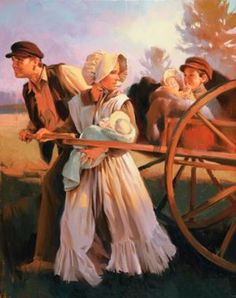 Their first homes were very crude houses of one room with perhaps a shed room the first few years. Inc floors were of puncheon and a fireplace, which served the double purpose of heating the room and providing a means of cooking, was made of mud and stones. The settlers later built two story log houses with a hall in the center which contained the stairway leading upstairs to the rooms.Their furniture consisted of the four poster beds, curtained off, with trundle beds underneath on which the children slept, a chest of drawers, a home made table and chairs.
Their first homes were very crude houses of one room with perhaps a shed room the first few years. Inc floors were of puncheon and a fireplace, which served the double purpose of heating the room and providing a means of cooking, was made of mud and stones. The settlers later built two story log houses with a hall in the center which contained the stairway leading upstairs to the rooms.Their furniture consisted of the four poster beds, curtained off, with trundle beds underneath on which the children slept, a chest of drawers, a home made table and chairs.
Pioneers were responsible for clearing their own land, building their homes, defending themselves, sewing their own clothes, and hunting for their own food. And the devices and tools they brought with them—severely limited by weight and size—were vital lifelines to succeeding in all of those pursuits.

25 Lost Pioneer Skills
1.Gardening
As gardens were the domain of women, settlers chose to plant them very close to the house. They were normally just steps from the kitchen, where the woman of the house could instantly have her hands on what she needed throughout the day. The site would either be completely flat, or slightly raised or pitched to encourage drain-off. The space was most often completely enclosed by fencing.Parsnips and carrots grew together. Radishes, lettuces, and onions were constantly in a state of being pulled – and so were grown together. Melons, cucumbers, squashes and pumpkins were planted alone, yet edged by cabbages to make the best use of the space – considering their growth habit.
2.Cooking and Baking
 Cooking was done in iron kettles which were set on tri-cornered iron holders. This was placed in the hottest place in the fire in the fireplace. Skillets, pots and tin pans were also used and every family had a huge brass kettle in which they made their soap, apple butter, maple syrup, and rendered out the lard.Staple food for the settlers was the barn and salt pork smoked by hickory log fire, dried beef, wild turkey, wild geese and deer. There would also be dried corn, dried apples, peaches and other fruits would be preserved in huge stone jars. The famous johnny cake, made of flour and corn meal and sweet-dried with molasses or honey and baked in ashes, was used for bread. The cacklin’ corn bread, served with hop jowl and greens, was considered a feast.
Cooking was done in iron kettles which were set on tri-cornered iron holders. This was placed in the hottest place in the fire in the fireplace. Skillets, pots and tin pans were also used and every family had a huge brass kettle in which they made their soap, apple butter, maple syrup, and rendered out the lard.Staple food for the settlers was the barn and salt pork smoked by hickory log fire, dried beef, wild turkey, wild geese and deer. There would also be dried corn, dried apples, peaches and other fruits would be preserved in huge stone jars. The famous johnny cake, made of flour and corn meal and sweet-dried with molasses or honey and baked in ashes, was used for bread. The cacklin’ corn bread, served with hop jowl and greens, was considered a feast.
3.First Aid and Herbal Medicine
For medicines the pioneers had to provide for themselves. Women soon learned the use of herbs for healing. They used boneset for fever, pennyroyal to purify the blood, horehound for coughs, and ginseng for tonic. Syrups and salves were made from cherry root, horseradish, and witch hazel. Wild mustard, poplar root, and red sumac root went into teas, poultices, and powders. The standard cure for a chest cold was to rub the chest with goose grease and apply a mustard plaster.
4.Hunting and Fishing
They would stand in the edge of the river to catch the fish.Spearing was the most common way to catch fish.Lantern fishing in the summer and ice fishing in the winter were other skills learned from the native people. In the winter pioneers got fish from ice holes. The most common fish caught using this method was trout.The hunters used decoys to attract the birds. Deycoys were made to look like ducks and geese.Once the birds were close enough the hunters would shoot them.Rabbits, gophers and birds were caught with snare traps. Hunting and fishing were carried out throughout the year.
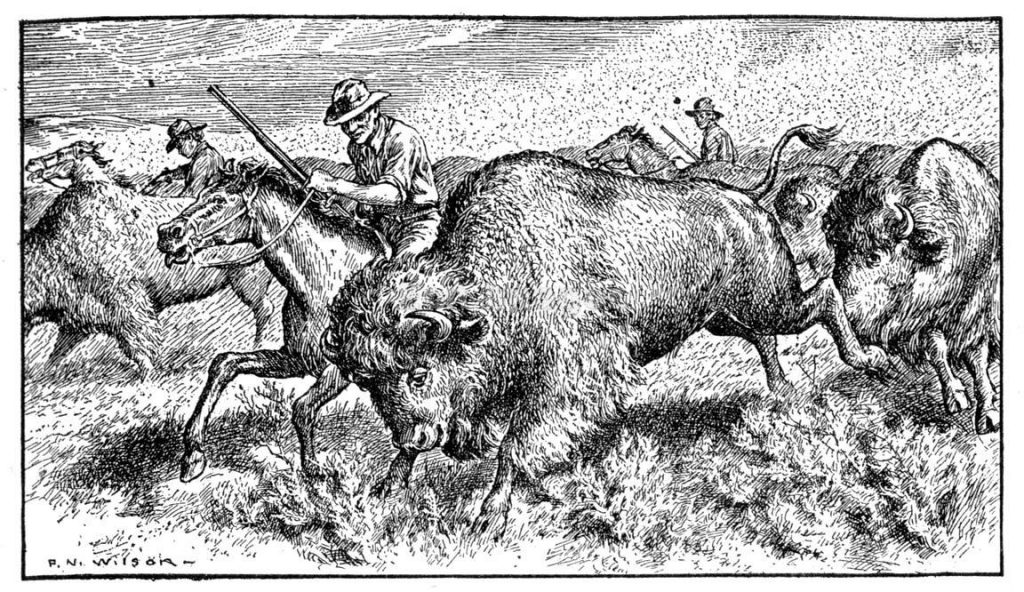
5.Fire-starting and Fire Building
Fires were made by striking a piece of steel against a flint rock.There were no matches. Fire was kept by burying wood in ashes.Sometimes two pieces of wood were rubbed together until they blazed (a hard job). Some times gunpowder was mixed with fine kindling and a spark from a flint rock and steele made a new start.
6.Canning and Preserving
Fruits could be dried by covering them with cheesecloth in direct sunlight, possibly on the roof of a homestead.During the summer the meat could spoil on the same day so preserving meat quickly was important. If it was to be eaten within a few days it would be par-boiled or par-roasted as soon as possible and then the cooking was completed just before eating it. For longer periods of time, meat would be pickled by stacking it in layers in barrels, separated by layers of salt, saltpeter and brown sugar and then soaked in brine.
7.Sewing
 Back in pioneer times most people had to make their own clothing.Sewing was the most important skill that a girl could learn and she usually learned it from her mother. It was a mother’s job to do all of the spinning, sewing, knitting and crocheting.
Back in pioneer times most people had to make their own clothing.Sewing was the most important skill that a girl could learn and she usually learned it from her mother. It was a mother’s job to do all of the spinning, sewing, knitting and crocheting.
8.Soap Making
In the pioneer days, the women would make lye by gathering the wood ashes from their fireplace and putting them into a wooden hopper. Next, they would pour water over it to soak the ashes. The water that seeped out of the hopper and into the wooden bucket was lye water.Next, they would boil the lye and tallow in a large cast iron kettle, and stir until the mixture thickened. Then they would pour it into old dishes or gourds or anything they could find to make a mold, and let it sit until it was almost all the way hardened. Once removed from the molds, the soap was cut into squares (or cakes) and left to sit in the sunlight to finish hardening.

9.Candle Making
The earliest settlers made their candles by the dipping method. A wick of cotton was dipped repeatedly into the melted tallow, with time to cool and harden between dips. This made a taper candle. These home made candles did not burn very well, emitted odors, and the light was poor.Those who could afford beeswax had candles from that wax. These were generally rolled from sheets of beeswax, and had a sweet honey smell.
10.Blacksmithing
For the early settlers, the blacksmith was perhaps the most essential tradesman. Not only did he make the iron parts for the first farming implements, he also could repair all iron objects by hammering them by hand on an anvil. After heating the iron until white-hot, the blacksmith would then shape and wield a multitude of objects from it, including carriage bolts and wheels, iron work for fishing craft, cooking utensils, and most importantly, horseshoes.
11.Leatherwork
Tanning leather-learning the process of skinning a deer, fleshing, stretching, drying, scraping, soaking, brain tanning, and then smoking the hide to waterproof. Deer hides, horse hides, coon hides – was used for just about everything, & rawhide was very useful.
Related: Pioneer Cooking Methods and Recipes
12.Well Building
13.Foraging
Whatever their surroundings, the pioneers had to depend on themselves and on the land. Self-reliance was a frontier requirement.New settlers gathered wild fruits, nuts, and berries. Food was scanty and monotonous. For months there were no fresh fruits or vegetables. In early spring, women looked eagerly for the first wild mustard and dandelion plants, which they could boil into a dish of “greens.”
14.Milking
 Everyone on a pioneer farm learned to milk,but the diary was most often looked after by women and girls.As soon as a pioneer family cleared a little land,they bought a cow.This useful animal provided milk to feed the family and calves that could be sould,slaughtered for meat,or if male,trained for plow or pull the wagon.The milk could also be turned into cheese and butter to trade at the general store or used to fatten the pigs and hens.Very little of the milk was used for drinking.
Everyone on a pioneer farm learned to milk,but the diary was most often looked after by women and girls.As soon as a pioneer family cleared a little land,they bought a cow.This useful animal provided milk to feed the family and calves that could be sould,slaughtered for meat,or if male,trained for plow or pull the wagon.The milk could also be turned into cheese and butter to trade at the general store or used to fatten the pigs and hens.Very little of the milk was used for drinking.
15.Beekeeping
Honey, which was called ‘long sweetenin” in Texas, was the only source of sweetening for many years.The pioneers carried beehives with them as they moved west, and today the bee is a major pollinator of food crops in the U.S.The pioneers collected honey made by honey bees and used it for baking and sweetening foods.
16.Bartering
Most of the settlers in a pioneer community used the barter system instead of money. A family would barter with the storekeeper when they did not have money to buy the things they needed. They traded some of the crops they grew or something they made, or they did odd jobs for things they needed.The storekeeper wrote down what people bought and sold in a book. He would add up what people brought in and what was taken from his store. This is how he kept a record of what people owed or how much credit they had. Then the storekeeper sold these products to others or shipped the products for sale in larger centres.
17.Seed Harvesting

When a crop was ready to harvest,the farmer used a sickle,scythe or cradle scythe to cut the crop.Then the stalks were bundled into sheaves.The standing bundles were called stooks.The stooks were left to dry in the field.Later the sheaves were hauled to the barn.The grain was spread out on the floor of the barn and hit with a flail.Seeds and straw remained.The grain seeds and chaff were placed in a basket and shaken and tossed on a windy day.
18.Repairing guns
A broken gunstock could be repaired with rawhide. The wet, pliable hide would be stretched over the broken pieces at the break, then either laced or nailed in place. As the rawhide dried it shrank, holding the broken stock together as effectively as if it had been replaced.
19.Washing Clothes
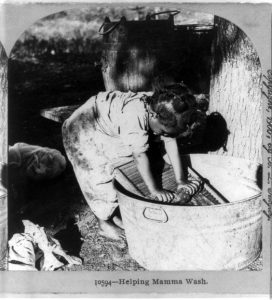 The cleaning chapter from the Iowa Settlers Manual of 1881 explains how to make a basic liquid laundry detergent using available materials.Washing clothes in the days of the pioneers and settlers was an elaborate ritual. Multiple tubs of water, scrubbing boards, handmade soaps, blue dyes for the white clothes, salt for the colored – and all done on a Monday. Monday was always washing day.
The cleaning chapter from the Iowa Settlers Manual of 1881 explains how to make a basic liquid laundry detergent using available materials.Washing clothes in the days of the pioneers and settlers was an elaborate ritual. Multiple tubs of water, scrubbing boards, handmade soaps, blue dyes for the white clothes, salt for the colored – and all done on a Monday. Monday was always washing day.
20.Building a home
When a family of settlers arrived at the spot where they planned to make their home, they began chopping saplings and trimming poles to build a lean-to. Between two forked trees they laid a crosspole. With the help of oxen or horses they rolled up a log, which was banked with dirt to form a low back wall. Then they laid poles, slanted upward, from the back log to the crosspole. The sloping roof was covered with bark and branches. The ends of the lean-to were walled with shorter poles and pickets. This was the pioneers’ “half-faced camp.” It always faced south, away from wind and rain. In front of the open side they dug a fire pit. Logs smoldered there day and night, giving warmth and protection.
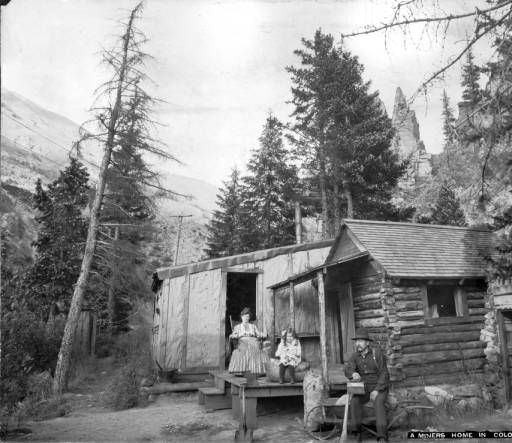
21.Storing Meat
Early settlers butchered their own meat and made corned beef, sausage, smoked and dried meats.Cold smoking is a method of smoking where the meat is not actually cooked, but is exposed to smoke that is channeled into an enclosed environment to absorb as much smoke as is desired by the individuals and to assure thorough preservation. This method takes much longer than hot smoking meats, but is preferred by some for the intense depth of the smoke flavor.Corning, Sugar and Salt Curing are essentially the same thing.The meats are coated with preserving salt, and left for days and weeks to preserve the meats. This method should only be done in cold weather to prevent bacteria growth.
22.Tracking
Tracking is identifying an animal by the footprints the animal left on the ground,by it’s scat and by the environment surrounding those footprints.They used their tracking skills to find and hunt the animals used for food,clothing and tools.
23. Orientation and Navigation
The pioneers knew how to find their way through forests,mountains,and unfamiliar terrain without the aid of compasses and maps.
24.Livestock
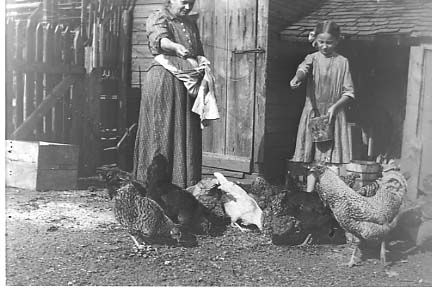
The pioneer farmers raised cows, sheep, pigs, chickens and other animals for food. For farm power, the pioneers relied on oxen.Farmers in 1900 also raised many kinds of animals, all on the same farm. Instead of oxen, farmers in 1900 had horses to do the heavy farm work.
25.Amusements
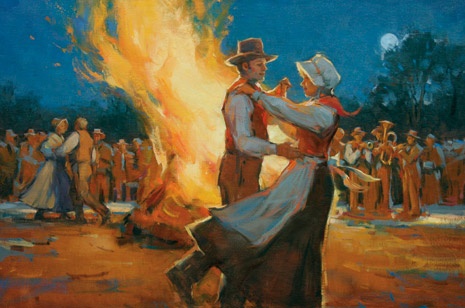 The amusements were simple but were keenly enjoyed. There were occasional quilting bees when the women of the neighborhood would gather and help the housewife with her quilts. The corn huskings where the huskers sat in rows on the barn floor and ate apples and drank cider. Weddings were occasions of feasting and merrymaking. Distances were so long that frequently the guests would remain overnight.
The amusements were simple but were keenly enjoyed. There were occasional quilting bees when the women of the neighborhood would gather and help the housewife with her quilts. The corn huskings where the huskers sat in rows on the barn floor and ate apples and drank cider. Weddings were occasions of feasting and merrymaking. Distances were so long that frequently the guests would remain overnight.
Have you imagined of a situation with no electrical power,computers,internet,TV and Walmart?Have you thought of how our forefathers survived during their days without all those?Are you aware of what tomorrow holds for you?Well,the truth is,you cannot predict tomorrow,but you can prepare for it,relying on survival skills from The Lost Ways.It is the basic things that our forefathers applied to survive during conflicts,starvations,death,wars and natural calamities,that are reinvented in The Lost Ways program so that we learn from them and not discard such knowledge and wisdom.The Lost Ways offers survival skills for self-sufficiency without investing any money.Click on the video below to learn more:
Unauthorized use and/or duplication of this material without express and written permission from this site’s author and owner is strictly prohibited. Excerpts and links may be used, provided that full and clear credit is given to The Prepper Dome with appropriate links and specific direction to the original content.
by James Dome

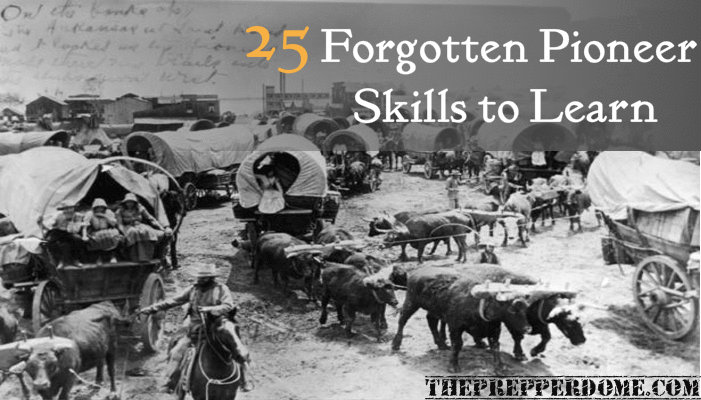


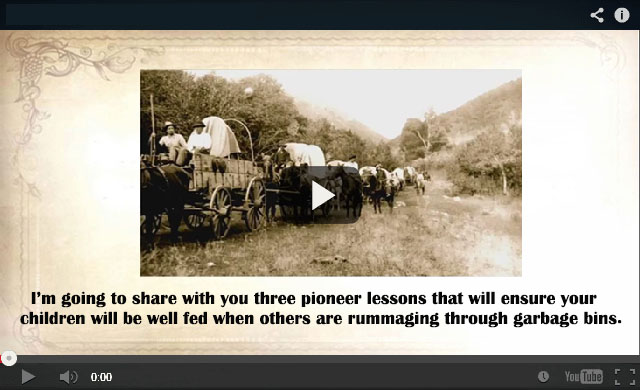
This is a wonderful article. I think we should all go back to the old ways of living. The system we have in place now is not working. It is causing cancer, hardships and an unatural way of life. Furthermore, the Natives were already doing alot of these things and they were here first. They were surviving until the white man brought in their diseases, religions and idiot governments.
I WOULD LOVE THOSE BOOKS BUT RIGHT NOW I DO NOT HAVE THE MONEY TO BUY THEM I AM ON A FIXED INCOME THANK YOU AND GOD BLESS
“the pioneers were the first people to settle in the frontiers of North America”……What happened to the Native populations that were here “settled” here thousands of years prior? Nothing like rewriting history to make the folks that destroyed a civilization seem like heros!